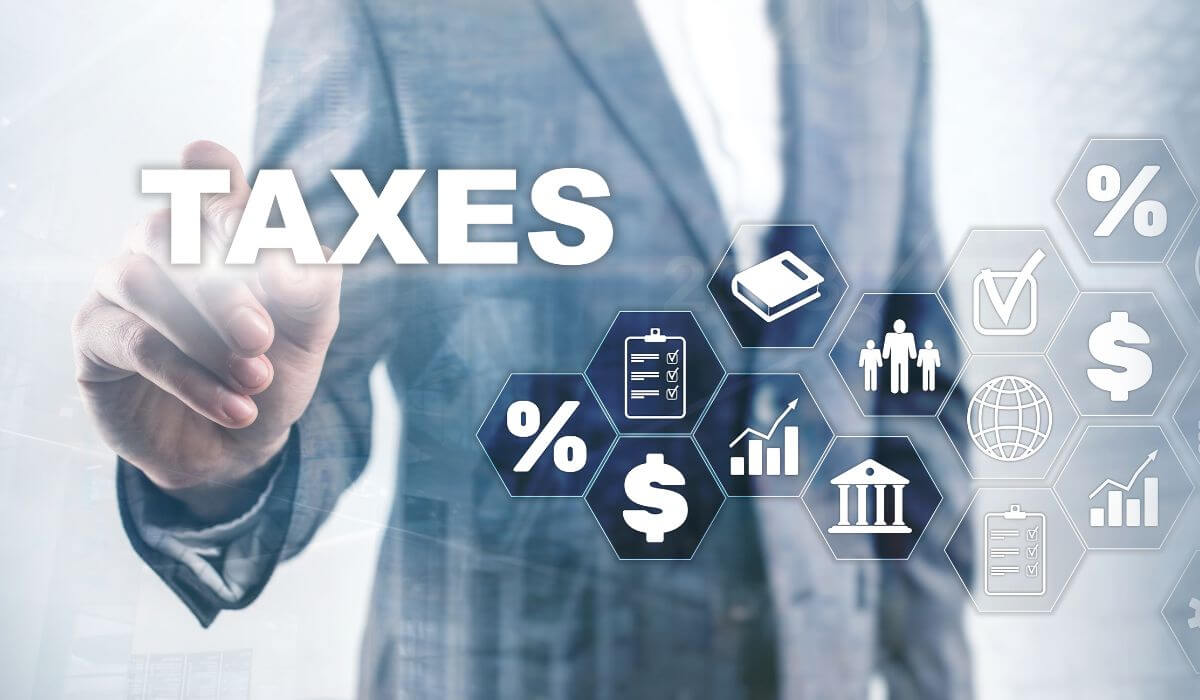How to Estimate Your Federal Tax Refund with Pay Stub
When workers receive their last pay stub of the tax year, they are likely wondering if they will receive a tax refund for the year and, if so, by how much. Most taxpayers know completing their income tax return is complex and challenging even with all the information they need, such as W-2 forms and receipts for other income and eligible deductions.
However, even without this information, a taxpayer can make an educated guess as to whether they will receive a tax refund or not, including the amount, by using the information on their last pay stub.
Gross Earnings and Taxable Income
Below, we will discuss the key considerations to determine the gross income to use when determining if a taxpayer will receive a tax refund and the estimated amount. The first section details how to do this and what to consider given a taxpayer with relatively simple tax considerations.
Gross Earning: the Basics
If a worker only has one employer for the entire tax year and doesn’t have any other form of income to report, the information on their employer-issued W-2 will be similar to their last pay stub. This is important because the W-2 is the starting point to determine if the taxpayer will get a refund. However, there are a few key considerations to be mindful of.
The first consideration is that employers use no standard pay stub format. In fact, employers are not required to provide pay stubs to their employees in nine US States. However, most pay stubs will have the same basic information, including pay, taxes, and other deductions.
The second thing to consider is whether the gross earnings on the paystub have had any adjustments throughout the year. For example, the reported gross income for the year may include reimbursements for personal funds used for business purposes. Since the worker used personal cash already taxed, they should remove this amount from the reported gross income.
The last important consideration is to know that employers may not include a worker's current and cumulative contributions to an IRA or 401(k). These contributions reduce a worker's taxable income by the amount contributed. It is important to consider this information that may not be included in a final pay stub. Each dollar contributed to these two retirement savings vehicles will reduce their taxable income by an equal amount.
Key Things to Remember

The important thing to remember is that a worker’s gross wages may differ from their taxable wages. Given this, when calculating if a taxpayer will receive a tax refund and the estimated amount, ensure the following to get the most accurate answer:
- The reported cumulative gross pay does not include anything outside of wages, salary, bonuses, commissions, etc.
- Any eligible worker contributions to an IRA, 401(k), or health insurance is deducted from the cumulative gross wages on the last paystub to determine total adjusted gross income.
Gross Earning: Complex Calculations
The previous section discussed the key considerations to determine whether a person will receive a tax refund and the estimated amount by using the reported gross income on their last pay stub. However, the example assumed the worker only had one source of income. Many Americans have more than one job, and will have two last pay stubs. It’s important to note two important considerations for taxpayers in this situation.
Progressive Income Tax Rates
The first thing to consider is that income taxes are progressive, meaning the income tax rates will increase as taxable income increases. With two jobs, each employer will be withholding income tax based on the assumed tax bracket the worker is in, given their wage and calculating an annualized amount.
The problem with this is the employer will only consider the pay they give the worker and won’t consider the pay from their other job. This can result in an underpayment of income taxes as the incorrect tax bracket is used, which can result in owing federal income taxes for the year.
Example Calculation
Using the federal income tax brackets, let's say a worker has two jobs where their taxable income for each job is exactly $41,775. The average federal income tax rate each of the two employers will use to calculate the federal tax withheld will be 11.51%*, equally $9,615 ($4,808 x 2) in federal income tax withheld.
However, the worker's federal tax owing at tax time will be their total taxable income of $83,550, which means their average federal income tax rate should have been 16.75%**, equalling $13,998. The worker would then owe $4,383 ($13,998 - $9,615) in additional federal income tax at tax time. This example only considered the federal income tax implications, but this issue would also exist with state income taxes.
Workers that find themselves in this situation should communicate with their employers to ensure the proper amount of tax is taken off throughout the year.
Social Security
Employers will deduct 6.2% off their employees' paychecks until they reach $160,200 in earnings for 2023. Any earnings beyond this amount will not have any further social security deductions. However, in situations where the employee has another job, and their combined income is greater than $160,200, they will likely have paid too much social security for the year. Given that, the worker in this example would receive a refund for the overpayment to the IRS.
Deductions

Now that we have covered the key considerations when using gross wages from the taxpayer’s last paystub to determine if they will receive a tax refund and the amount, we need to look at what the taxpayer can deduct from their gross income to reduce their taxable income.
Taxpayers can either use the standard deduction amount the IRS sets for the tax year based on filing status, or Schedule A of the 1040 form and itemize their deductions. If the taxpayer's total itemized deduction is more than the standard deduction, it makes sense to use the total itemized deduction. However, if it is less, it makes sense to use the standard deduction.
For the taxpayer to claim the itemized deduction, they need to ensure they have all the receipts to back up their itemized expenses.
Standard Deductions
Standard deductions are a fixed amount the Internal Revenue Agency (IRS) lets taxpayers deduct from their adjusted taxable income with no questions asked. The table below notes the standard
|
Filing Status |
2023 Standard Deduction |
|
Single |
$13,850 |
|
Married Filing Separately |
$13,850 |
|
Heads of Household |
$20,800 |
|
Married Filing Jointly |
$27,700 |
|
Surviving Spouses |
$27,700 |
Itemized Deductions
Taxpayers can reduce their federal income taxes by deducting eligible expenses from their Adjusted Gross Income. As noted earlier in the article, it only makes sense to itemize deductions if the sum is greater than the standard deduction. Below are the five areas of itemized deductions noted on Schedule A of Form 1040:
- Medical and Dental Expenses
- Taxes Paid
- Interest Paid
- Gifts to Charity
- Casualty and Theft Losses
Further Deduction
Another deduction available to the taxpayer is student loan interest. With student loan amounts increasing exponentially each year, this offers some help to student loan holders. Unfortunately, the maximum amount of student loan interest the taxpayer can claim is $2,500.
Estimating your annual taxes
Make a list of the federal, state, and local income taxes withheld from a recent pay stub, preferably one without any "exceptional" income such as bonuses or overtime. Then multiply the total by the relevant factor.
- If you get paid Weekly, multiply your withholding by 52
- If you get paid Biweekly, multiply your withholding by 24
- If you get paid Semi-monthly, multiply your withholding by 26
- If you get paid Monthly, multiply your withholding by 12
You can use an Online Tax Calculator to determine the income tax owed to the IRS. In addition, you can estimate your tax refund if applicable.
Summary - Estimate tax refund with last pay stub
Determining whether a taxpayer will get a federal income tax refund and the estimated amount isn’t easy, but an educated guess can be made. Let’s quickly review the steps.
- Determine the taxpayers gross taxable income for all jobs and free from employer adjustments.
- Choose whether a standard deduction or itemized deduction will be used. If a standard deduction is used, choose an appropriate filing status.
- Subtract the chosen standard deductions based on the taxpayers filing status from the gross income to determine taxable income.
- Calculate the federal tax owed using the federal tax brackets.
- Compare the cumulative federal income tax deductions on the taxpayers last pay stub(s). If it is more than the federal income tax calculated in the fourth step, they will receive a refund for the difference. They will owe money to the IRS if the difference is less.
* 10% on the first $10,275, and 12% for the remaining $31,500; total income tax equals $4,807.50, which equals an average income tax rate of 11.5% ($4,807.50/$41,775).
** 10% on the first $10,275, 12% for the next $31,500, and 22% on the next $41,775, which equals an average federal income tax rate of 16.75% ($9,190.5+$4,807.5/$83,550 = $13,998).
Kristen Larson is a payroll specialist with over 10 years of experience in the field. She received her Bachelor's degree in Business Administration from the University of Minnesota. Kristen has dedicated her career to helping organizations effectively manage their payroll processes with Real Check Stubs.

